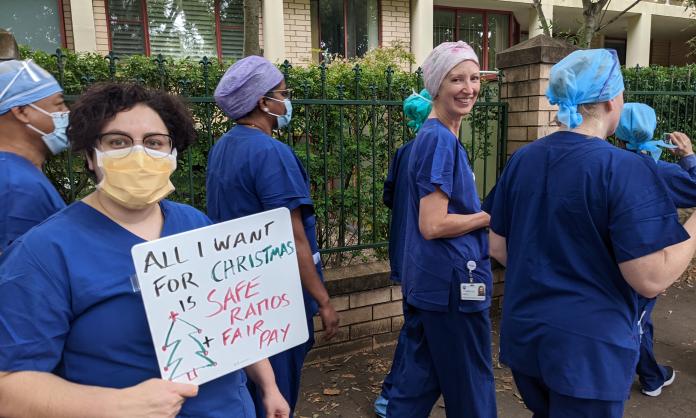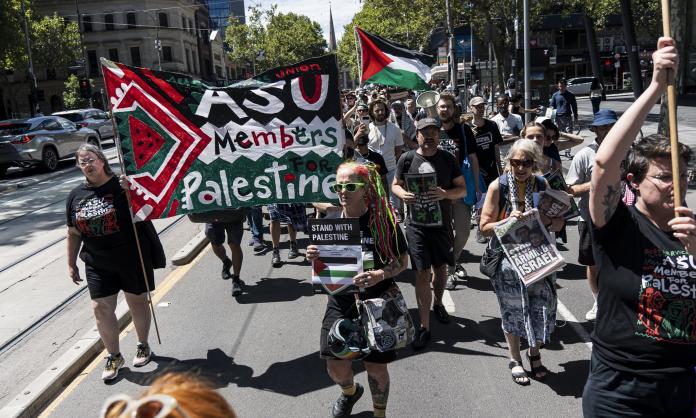Hundreds of nurses and midwives walked off the job at St Vincent’s Private Hospital in Sydney on Thursday. In response to stalled negotiation, blue-scrub-clad members of the NSW Nurses and Midwives’ Association rallied outside the Darlinghurst hospital and the Mater Hospital in North Sydney for a one-hour stoppage at 1pm.
This was reportedly the first industrial action taken at St Vincent’s private in more than twenty years. It followed a recent vote to reject a contract that offered a below inflation “pay rise” of 3.75 percent in 2023 followed by 3.25 percent in 2024 and 2025.
A glance at the conditions workers face inside the hospitals explains the vote and the enthusiasm for taking action. Since the start of the pandemic, private hospitals have taken on patients from public hospitals overrun with COVID-19 cases. Existing staff have had to shoulder increased workloads, such as gruelling fourteen-hour shifts. This has led to an exodus of nurses—including many experienced senior staff opting to retire early rather than work to breaking point—which has put even more strain on the system.
“Before the pandemic, this was quite a happy environment. We were well staffed”, Phoebe Turner, the Mater Hospital’s union branch president, told Red Flag. But with staff not being replaced, there are now chronic staff shortages. “In theatres alone, normally there’s one anaesthetic nurse for every theatre ... Now they’re stretching them to one anaesthetic nurse to four theatres”, she said.
“We used to have farewell parties for all the nurses that were leaving. We’d have a cake—all of that”, Turner continued. “Now, everyone’s leaving. We don’t even bother having parties, because literally it’s just so often that people are going that ... nobody can bloody afford a cake.”
Outside the wards, life is getting harder for healthcare workers. A St Vincent’s Health spokesperson expressed disappointment at the industrial action proceeding despite “the generosity of the offer” from hospital management. But the private hospitals run at a profit and provide care for billionaires such as Lachlan Murdoch and James Packer—the offer of a real wage cut is a slap in the face.
Addressing the rally at Darlinghurst, the hospital’s lead delegate told the crowd that very few nurses working in the building live in the area because nobody can afford the rents.
Alongside a 5.5 percent or inflation-pegged pay rise, the union is demanding shift-based nurse-to-patient ratios. There are no mandated ratios in NSW for public or private hospitals.
Many nurses and midwives who spoke to Red Flag mentioned the four state-wide strikes held by their colleagues in the public sector this year. Those actions gave confidence to unionists in the private sector.
The work stoppage had extra importance. The state Labor opposition has committed to introducing some ratios in the public sector if elected in the March 2023 election. But it has refused to outline what its pay offer to nurses will be if it forms government.
Even in Labor governed states where nurses have won ratios in the past, the healthcare worker shortage and COVID-19 surge means that they are being abandoned in practice. The nurses’ union in Western Australia recently faced threats of deregistration from the Labor Premier Mark McGowan for fighting to improve hospital conditions. Victorian nurses’ living standards have gone backwards because of Labor Premier Daniel Andrews’ 1.5 percent public sector pay freeze.
“Because conditions were so bad, we felt like [the stoppage] was the only way to have our voice heard”, Turner said. Union members are also placing work bans on domestic and other non-nursing and non-midwifery duties. They say that they will take further action if their demands are not met.










